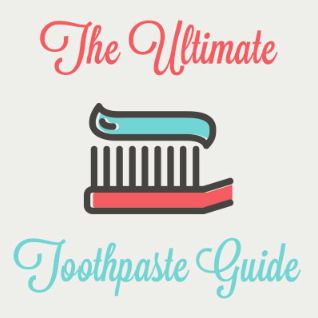Fresh breath really sets the tone for every moment of your day: first thing in the morning, before an important meeting, after working out, or just before bed. Whether you prefer cool mint, invigorating cinnamon, or herbal anise, it’s your favorite trusty toothpaste that delivers that fresh clean feeling.
So, what’s the scoop on toothpaste? What is essential to know in order to get the most out of it? You might be surprised as you learn more about this common product. Dr. Kyle Todd in Cypress gives you the full story on toothpaste to empower you to take oral health into your own hands … or your own toothbrush, rather.

What is Toothpaste?
Toothpaste is an important preventative product. It can prevent tartar (hardened plaque) and gum disease if used regularly.
Pastes, gels, powders – toothpaste comes in a variety of forms. But all toothpaste has more or less the same ingredients that make it work, and work well.
- Abrasives—The most important thing toothpaste does is remove unwanted stuff off the surface of your teeth. Long ago, people used gritty materials like brick dust, charcoal, tree bark, and animal hooves to wash away unwanted gunk from their teeth. Thanks to technology and modern science, we now have much gentler ingredients proven to be safe and effective.
- Detergent—An ingredient more often associated with dishes or laundry, detergent is what makes toothpaste foam. This helps move particles off your teeth that water alone cannot.
- Fluoride—This mineral strengthens tooth enamel and makes teeth more resistant to decay. Some parents of small children are concerned about fluoride in children’s toothpaste because kids swallow a lot of paste as they are learning to brush (and too much fluoride is not good to ingest). Toothpaste is regulated for safety, but talk with your dentist if you are concerned.
- Humectants—These substances keep the paste from drying out, which is very helpful since you take that cap on and off multiple times each day.
- Flavor—Thanks to modern science, our toothpaste can have amazing flavors like peppermint, cinnamon, and bubblegum without any sugar or components that would cause tooth decay.
Can You Use Toothpaste Wrong?
No toothpaste would be effective without the actual brushing motion. (The same way dish soap does nothing unless you actually scrub your dirty plates.) So, be sure you’ve got your brushing technique down to get the most out of your paste.
To start, you really only need a small amount of toothpaste on your brush. The size of a pea is just enough. Commercials shows tooth brushes overloaded with paste, which encourages you to use more than you need and use up that tube (and spend money) faster than is necessary!
For the healthiest smile, take your time. You want more than just a quick brush for fresh breath. Hold your brush 45 degrees, or perpendicular, to your teeth and gums and brush gently for a whole 2 minutes. Be mindful of brushing each tooth and near your gum line. And be sure not to swallow any excess toothpaste.
Which Toothpaste is Right for Me?
When it comes to different kinds of toothpaste, you have no shortage of options.
- Sensitive—If you have sensitive teeth, that painful zing is caused by dentin (the bone at the core of your teeth) being exposed. Sensitive toothpastes have ingredients that work hard to protect your tooth and ease pain related to hot or cold temperatures.
- Holistic—If you’re into natural health and wellness, there are plenty of toothpaste brands that use fewer chemicals. These products are not always studied or proven effective, but they will work if you maintain good brushing techniques.
- Whitening—All toothpaste removes some stains. But for more dramatic results, whitening toothpastes use more abrasives to scrub even harder at those stains. Be careful, as some whitening toothpastes are too abrasive and may cause tooth sensitivity. If you want whiter teeth, consider getting a professional whitening treatment.
The most important thing is that you buy toothpaste that will make you excited to brush your teeth!
For all toothpaste sold in stores, look for seals of approval from The US Food and Drug Administration and the American Dental Association. The FDA tests toothpaste for safety and the ADA makes sure that toothpastes actually do what they claim to.
Toothpaste is good at preventing plaque buildup on your teeth and infection in your gums. But it does not replace the care of a professional dental cleaning. Only a dentist can remove tartar, which is build up from food or other materials that has hardened and cannot be removed by brushing and flossing.
Your teeth and gums serve you every day, it’s only fair to treat them well in return. Get in touch with Cypress Springs Family Dentistry for a professional cleaning today!
